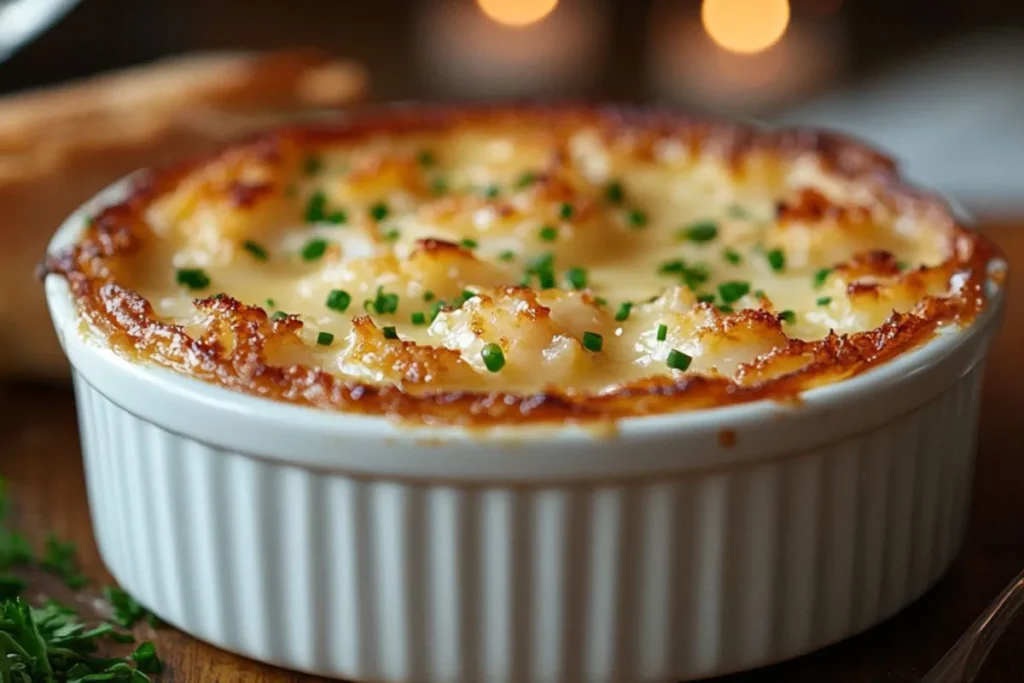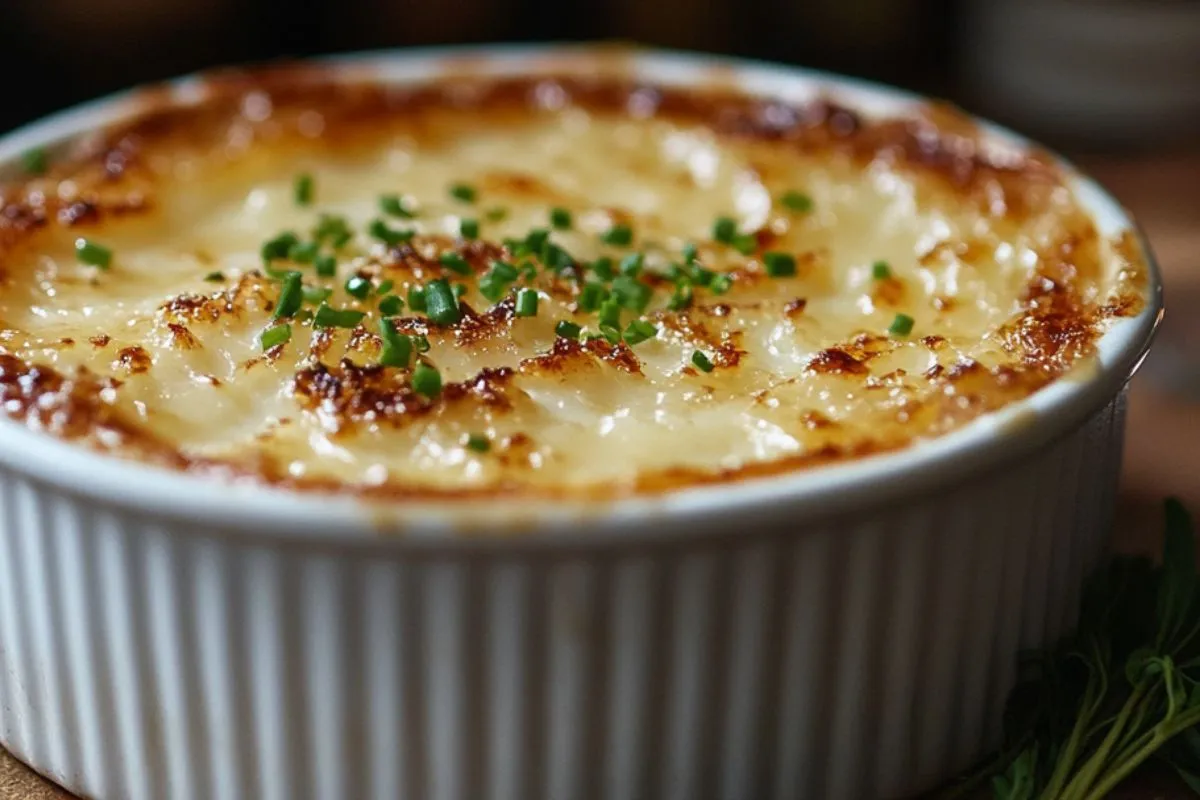Crab brulee is a luxurious, savory twist on the classic creme brulee dessert. This culinary creation combines the rich flavors of crab with the creamy texture of a custard base, topped with a crispy caramelized crust. If you’ve ever wanted to elevate your cooking skills and impress your dinner guests, this dish is the perfect opportunity to do so. In this article, we’ll guide you through the steps to make an unforgettable crab brulee, explore its origins, and offer tips for serving it as part of an exquisite meal.
Understanding Crab Brulee
Crab brulee isn’t just a recipe; it’s an experience. This dish bridges the gap between fine dining and comfort food, offering a blend of creamy, savory, and subtly sweet flavors. The magic lies in the harmonious balance of fresh crab meat, aromatic herbs, and a smooth custard base. The caramelized sugar topping adds a hint of sweetness, creating a delightful contrast that leaves a lasting impression.
Historically, brulee refers to a dessert with a hardened caramel top. Chefs have adapted this technique to savory dishes, using ingredients like cheese, seafood, and even vegetables. Crab brulee is one such adaptation, showcasing the versatility of this cooking method. It’s a dish that celebrates innovation while respecting the classic techniques of French cuisine.
Most importantly, this recipe highlights the importance of quality ingredients. Fresh crab meat is essential for achieving the best flavor. Additionally, using high-quality cream, eggs, and seasonings ensures a silky texture and well-balanced taste. Therefore, sourcing the right components is the first step toward culinary success.

The Origins and Evolution of Crab Brulee
While creme brulee has a well-documented history dating back to 17th-century France, its savory counterpart—crab brulee—is a more modern innovation. The concept of using seafood in custard-like dishes gained popularity in fine dining during the late 20th century. Chefs sought to reinvent traditional dishes by incorporating unexpected ingredients, and crab brulee emerged as a sophisticated yet approachable option.
The appeal of crab brulee lies in its unique combination of flavors and textures. The creamy custard base pairs beautifully with the natural sweetness of crab meat, while the caramelized sugar crust adds a surprising element of crunch. Over the years, this dish has evolved to include various regional influences, such as the addition of spices in Asian-inspired versions or the use of locally sourced herbs in Mediterranean interpretations.
Crab brulee is now a favorite among food enthusiasts and home cooks alike. Its versatility makes it suitable for a range of occasions, from elegant dinner parties to casual gatherings. With the right preparation techniques, you can bring this restaurant-quality dish to your own table.
Preparing the Ingredients
Before diving into the cooking process, gather all the necessary ingredients. Here’s what you’ll need:
- 1 cup of fresh crab meat (preferably lump or claw meat)
- 1 cup of heavy cream
- 2 large egg yolks
- 1 teaspoon of Dijon mustard
- 1 teaspoon of lemon zest
- 1 tablespoon of finely chopped chives
- 1/4 teaspoon of cayenne pepper
- Salt and freshly ground black pepper to taste
- 2 tablespoons of granulated sugar (for the brulee topping)
Ingredient Tips
- Crab Meat: Opt for the freshest crab meat available. If you’re near a coastal area, visit a local seafood market. Otherwise, high-quality packaged crab meat can suffice. Freshness directly impacts the flavor and texture of the dish.
- Cream: Heavy cream provides the necessary richness for the custard. Avoid using substitutes like milk or half-and-half, as they won’t yield the same creamy consistency. Using organic cream can enhance the overall taste.
- Egg Yolks: These are crucial for setting the custard. Separate the yolks carefully to avoid any egg white mixing in. Properly separated yolks ensure a smooth, velvety texture.
With your ingredients ready, it’s time to move on to the preparation process. Each step plays a pivotal role in achieving the desired texture and flavor.
Step-by-Step Cooking Instructions
Making the Custard Base
- Preheat the Oven: Set your oven to 325°F (160°C). Prepare a baking dish by filling it with about 1 inch of hot water to create a water bath. This method ensures even cooking and prevents the custard from curdling.
- Mix the Ingredients: In a mixing bowl, whisk together the egg yolks, heavy cream, Dijon mustard, lemon zest, chives, cayenne pepper, salt, and black pepper. Ensure the mixture is smooth and well combined. Whisking thoroughly helps to incorporate air, resulting in a lighter custard.
- Fold in the Crab Meat: Gently fold the crab meat into the custard mixture. Be careful not to break up the crab too much; larger pieces enhance the texture of the dish. Use a spatula to mix gently, ensuring even distribution.
- Divide into Ramekins: Pour the mixture into ramekins, filling them about 3/4 full. Place the ramekins into the prepared baking dish. This step ensures even portions and helps with presentation.
- Bake: Transfer the baking dish to the oven and bake for 30-35 minutes, or until the custard is set but still slightly jiggly in the center. Overbaking can lead to a dry texture, so keep a close eye on the custards during the last few minutes.
Caramelizing the Topping
- Cool the Custard: Remove the ramekins from the oven and let them cool to room temperature. Then refrigerate for at least 2 hours to firm up the custard. Cooling ensures the custard sets properly, making it easier to caramelize the topping.
- Add Sugar: Sprinkle a thin, even layer of granulated sugar over the top of each ramekin. For an even crust, use a small sieve to distribute the sugar evenly.
- Caramelize: Use a kitchen torch to caramelize the sugar until it’s golden and crispy. Alternatively, you can place the ramekins under a broiler for a few minutes, watching closely to prevent burning. The goal is to achieve a uniformly caramelized surface.
Final Touches
Allow the caramelized topping to cool and harden for a minute before serving. The contrast between the cool custard and warm, crispy sugar creates a delightful sensory experience. Serve immediately to enjoy the textural interplay at its best.
Tips for Serving and Pairing
- Serving Suggestions: Crab brulee works wonderfully as an appetizer or a small plate in a multi-course meal. Serve it with toasted baguette slices or a light green salad. Pairing it with crusty bread enhances the dish’s creamy texture.
- Wine Pairing: A crisp white wine, such as Sauvignon Blanc or Chardonnay, complements the dish’s richness. For a non-alcoholic option, try sparkling water with a twist of lemon. The acidity balances the richness of the custard.
- Presentation: Garnish the ramekins with a sprig of fresh chives or a small piece of crab claw meat for an elegant touch. Adding edible flowers can elevate the visual appeal further.
Common Mistakes and How to Avoid Them
- Overcooking the Custard: Monitor the baking time closely. Overcooking can lead to a grainy texture. Use a toothpick to check doneness; it should come out clean but moist.
- Uneven Sugar Layer: Spread the sugar evenly to achieve a uniform caramelized crust. Clumps of sugar can result in uneven browning.
- Using Low-Quality Ingredients: Freshness and quality directly impact the final result. Don’t compromise on these aspects. Fresh crab and high-quality cream make all the difference.
- Skipping the Water Bath: This step is essential for even cooking. Without it, the custard may cook unevenly or develop cracks.
Experimenting with Variations
Crab brulee is a versatile dish that invites creativity. Here are some variations to consider:
- Spicy Kick: Add a dash of hot sauce or a pinch of smoked paprika for an extra layer of flavor. Spices like cayenne or chipotle can add depth.
- Cheesy Twist: Incorporate grated Gruyere or Parmesan cheese into the custard mixture. Cheese adds a rich, savory element to the dish.
- Herbaceous Notes: Experiment with fresh herbs like dill or parsley to enhance the aromatic profile. Herbs bring a fresh and vibrant flavor to the brulee.
- Seafood Medley: Mix in small amounts of other seafood, such as shrimp or scallops, for a more complex flavor. This variation creates a surf-and-turf effect.
Serving Crab Brulee at Events
Crab brulee isn’t just for intimate dinners; it’s also a showstopper at larger gatherings. Here’s how to make it event-ready:
- Mini Portions: Use smaller ramekins for bite-sized servings. This approach works well for cocktail parties or buffet-style events.
- Pre-Made Options: Prepare the custard in advance and caramelize the sugar just before serving. This ensures freshness while saving time.
- Interactive Stations: Set up a station where guests can caramelize their own brulee toppings. Provide a variety of sugars, such as brown sugar or flavored options, for customization.
Conclusion
Crab brulee is more than just a recipe; it’s a celebration of gourmet cooking. By combining the creamy decadence of a custard base with the delicate flavor of crab, this dish offers a unique dining experience. Whether you’re preparing it for a special occasion or simply indulging in a culinary adventure, crab brulee is sure to impress. Follow this guide, and you’ll master the art of creating this sophisticated dish. Your guests will savor every bite, and you’ll relish the satisfaction of crafting a restaurant-quality meal at home. With endless variations and serving options, crab brulee is a versatile addition to any cook’s repertoire, ensuring you’ll return to this recipe time and time again.

